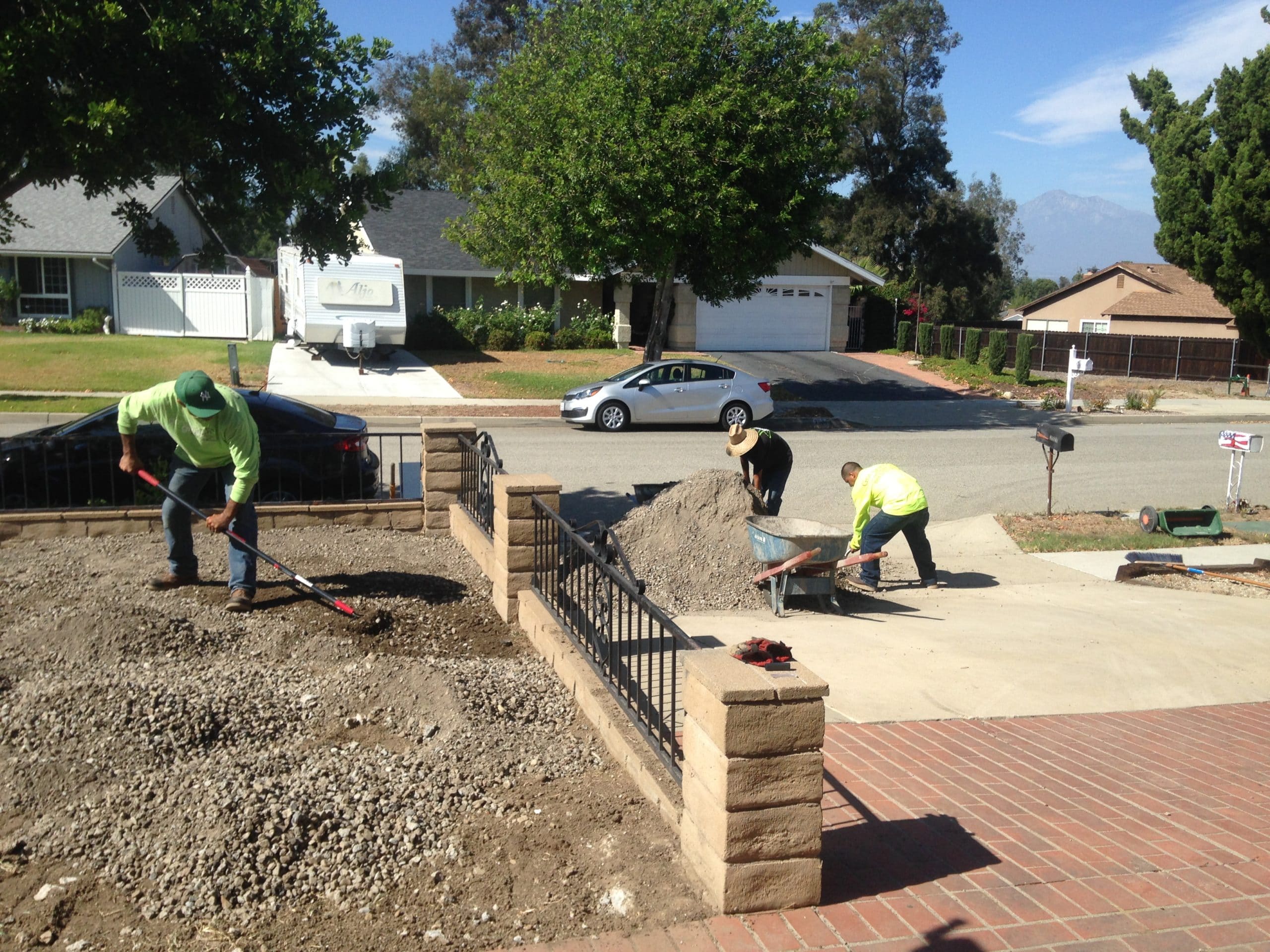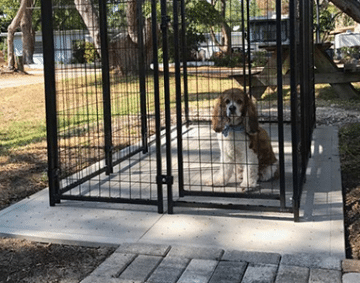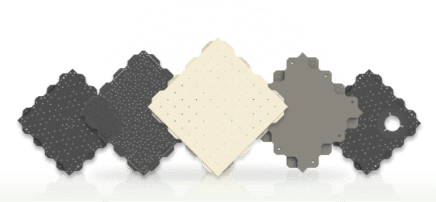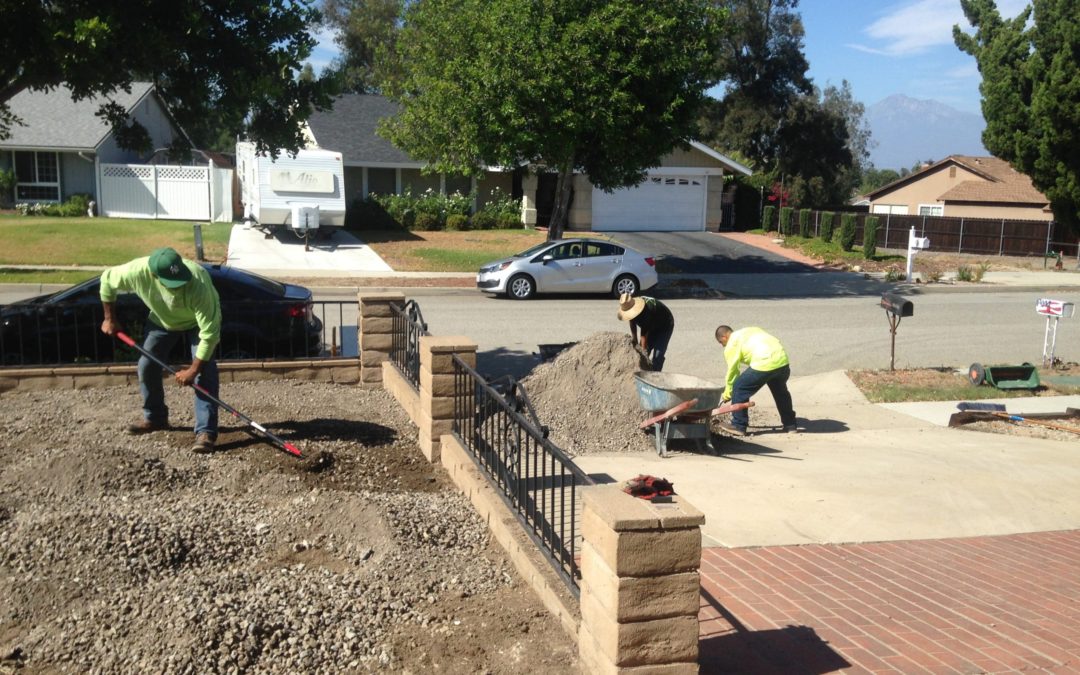Updated: February 11, 2025
If you’ve decided to install artificial grass, first, congratulations on making a wise, water-saving decision. Not only will artificial grass help to significantly reduce your water consumption, it also provides you with a beautiful, functional lawn that will pay for itself in just a few years.
Excavating
Once you’ve determined where you want to install your artificial grass and the dimensions of your soon-to-be-amazing new lawn, it’s time to start excavating your existing soil. Excavating soil is a critical step in a proper artificial grass lawn installation. The native soil that will be excavated will be replaced with a sub-base. What is artificial grass sub-base?
Why Sub-base?
But, you may wonder, why do I need to install a sub-base? Why can’t I just install my artificial grass on the soil as is? The answer has to do with some basic scientific principles – expansion and contraction. Soil naturally expands and contracts over time depending on climate. For natural grass this presents no problem because it is growing in the soil. For artificial grass, however, such expansion and contraction can result in buckling, wrinkling and an uneven surface.

This grass is being installed next to a hard concrete edge
The solution for preventing this is to replace the soil with a substance that will not expand or contract. A proper sub-base comprised of either class II road base (also known as crushed miscellaneous base or CMB) or decomposed granite will provide an excellent foundation for your artificial grass and will help ensure you get the most out of your investment.
CMB vs DG
CMB is a blend of recycled concrete and/or recycled asphalt and consists of a sand-gravel mixture of varying-sized particles up to ¾ of an inch in size. Decomposed granite, or DG, is granite rock that has weathered to the point that it readily fractures into smaller pieces of weak rock and/or into mixtures of gravel, sand, and silt-size particles of clay. Both are great materials for your sub-base. CMB is more easily compacted than DG but doesn’t drain quite as well. DG, meanwhile, yields a smoother finish than CMB but it is quite a bit more expensive. Generally, CMB is the best choice for artificial grass in landscaping while DG is the best choice if you’re installing a putting green.
Sub-base Compacting
Once you’ve decided on the appropriate sub-base material, it’s time to shake a leg…and everything else too! After you’ve spread the sub-base material over your installation site, your best option for a proper installation is to use a vibratory-plate compactor. You may also opt to use a roller and a hand tamper to get those hard-to-reach areas and tight corners. Oh, and be sure to wet down your sub-base as you’re compacting it to help remove any voids or air spaces.

Adding a sub-base may seem like a lot of extra work. But like anything worth doing, it’s worth doing well. Installing artificial grass the right way the first time will be beneficial in the long run. For more information on the installation process, check out our artificial grass installation videos or come on down to your local Purchase Green store. We’re happy to help you figure out which sub-base is right for your and how much you need for your installation.
Ultra Base – An Alternative to a Crushed Rock Base
One alternative that is used by some artificial grass installers is the innovative Ultra Base System. Not only is this panel system ideal for sloped installs, rooftops, and limited access areas, but it can be used on virtually any job to streamline installation, reduce site disruption, and save turf installers money.
View Ultra Base Products @ Shop.PurchaseGreen
A Base for Unique Applications
There are many instances in which a crushed rock sub base is not an ideal option. For instance, creating a base for artificial grass on a sloped area is not really feasible with loose stone and Ultra Base panels represent an ideal alternative. Stone is also too heavy and inconvenient for many rooftop applications and the lighter weight Ultra Base panels excel by providing both structural support and excellent drainage. Plus, like many spaces, it is often impossible or impractical to dump tons of stone on a street and figure out how to get it to a rooftop. Ultra Base panels are ideal for these “limited access” spaces including courtyards, inner city spaces, and existing patio and pool areas where damage to the space is a major concern.

Easier, Faster, & Cheaper
Based on the success of these panels in unique applications, more and more installers started using them as a sub base for everything from athletic fields and putting greens to lawns and landscape. They can installed in a fraction of the time as a crushed rock base and do not require heavy equipment that often destroys the surrounding area. Simply excavate the land, lay the geotextile fabric and drop and lock the panels into place. The savings in labor, equipment, clean up and other costs makes these panels incredibly cost effective. Plus, they provide the long term structural stability and drainage to ensure a long-lasting solution that performs. Visit Ultra Base to see why these panels are ideal for building a sub base for artificial grass installations.
A Concrete Pad Alternative
 Ultra Base also offer panels for those looking for a safer, less permanent, and better draining alternative to a concrete pad or sub base. By Replacing Mass with Science, Ultra Base panels streamline installation, reduce site disruption, and provide a number of benefits over concrete pads. Visit Ultra Base to view panels that can be used for installing artificial grass over concrete or as a concrete pad alternative.
Ultra Base also offer panels for those looking for a safer, less permanent, and better draining alternative to a concrete pad or sub base. By Replacing Mass with Science, Ultra Base panels streamline installation, reduce site disruption, and provide a number of benefits over concrete pads. Visit Ultra Base to view panels that can be used for installing artificial grass over concrete or as a concrete pad alternative.
Visit Ultra Base for a FREE Quote Today




